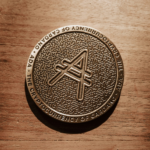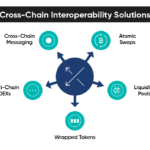In an era dominated by digitization and decentralized finance, the conventional concept of wealth has expanded beyond physical assets to include an array of digital assets. Cryptocurrencies, Non-Fungible Tokens (NFTs), and other blockchain-based assets have become integral components of many investors’ portfolios.
However, with the rise of digital wealth comes the crucial responsibility of protecting these assets. This blog explores the intricacies of digital asset custody, shedding light on the significance of secure storage solutions.

Understanding Digital Assets and the Need for Custody
The Evolution of Wealth: From Tangible to Digital
Undoubtedly, cryptocurrencies have gained widespread acceptance as legitimate stores of value. The emergence of NFTs has introduced a digital dimension to ownership and provenance, making digital assets diverse and complex.
The decentralized nature of blockchain technology, while offering numerous benefits, also poses unique challenges in terms of custody. Unlike traditional banks, cryptocurrencies operate on decentralized networks, making it imperative for individuals to take control of the security of their digital assets.
Learn more about the rewards of investing in digital assets here. (Link to PB2 “The Ultimate Guide to Risks and Rewards of Investing in Digital Assets”)
The Significance of Custody in the Digital Realm
Digital asset custody refers to the secure storage and management of digital assets, ensuring their protection against theft or unauthorized access. Custody serves as the bridge between the decentralized nature of blockchain networks and the need for secure storage. Proper custody solutions not only protect assets from external threats but also offer peace of mind to investors who can trust that their digital wealth is safeguarded.
Types of Digital Asset Custody Solutions
Hot Wallets vs. Cold Wallets: Striking the Right Balance
One of the primary decisions individuals face in digital asset custody is choosing between hot wallets and cold wallets. Hot wallets are convenient for quick transactions but are more susceptible to hacking. Cold wallets are offline devices and provide enhanced security but with limited accessibility.
Balancing convenience and security is crucial in choosing the correct custody solution. Many investors adopt a hybrid approach, using hot wallets for daily transactions and cold wallets for long-term storage. Physical devices designed for secure storage offer an extra layer of protection, keeping private keys offline and out of reach from potential cyber threats.

Custodial Services: Delegating Security to Professionals
For those who prefer a hands-off approach, custodial services provided by specialized companies offer a compelling solution. These services act as trusted third parties, managing the security and storage of digital assets on behalf of their clients. While this approach alleviates the burden of self-custody, it introduces a level of dependency on the reputation and security practices of the custodial service.
Custodial services often implement advanced security measures, including multi-signature authentication and cold storage, to protect clients’ assets. However, users must thoroughly research and select reputable custodians with a proven track record of security and reliability.
Security Best Practices for Digital Asset Custody
Strong Passwords and Two-Factor Authentication: The First Line of Defense
Regardless of the chosen custody solution, the significance of strong passwords and two-factor authentication can’t be overstated. A strong password serves as the first line of defense against unauthorized access. Coupled with 2FA, which requires a secondary verification method like a mobile authentication app, the security of digital assets is significantly strengthened.
Regular Backups: Mitigating the Risk of Data Loss
Data loss is a persistent threat in the digital realm. Whether because of hardware failure or cyber attacks, the loss of private keys or access credentials can result in devastating consequences. Implementing regular backups of crucial information, stored securely in multiple locations, provides a safety net in case of unforeseen circumstances.
Stay Informed: Keeping Up with Security Developments
The landscape of digital asset custody is dynamic, with new security threats and vulnerabilities constantly emerging. Staying informed about the latest developments in cybersecurity and adopting proactive measures is essential for maintaining the integrity of digital wealth. Engaging with online communities and following reputable sources of information can provide investors with the knowledge needed to navigate the ever-changing security landscape.
Regulatory Considerations and the Future of Digital Asset Custody
As the digital asset space grows, regulatory scrutiny has increased to ensure the protection of investors and the integrity of financial markets. Governments around the world are formulating comprehensive frameworks for the custody of digital assets. Investors must be mindful of regulatory requirements in their jurisdictions and choose custody solutions that comply with these standards.
The future of digital asset custody holds promise, with ongoing innovations in technology aimed at enhancing security and user experience. From advancements in secure multi-party computation to the integration of artificial intelligence for threat detection, custodial solutions are evolving to address emerging challenges. Decentralized finance (DeFi) platforms, which operate on blockchain networks without the need for traditional intermediaries, are also exploring innovative custody solutions.

Connect With Our Consultants To Make Safe Investments In The Digital Asset Market
Discover a new era of wealth management with Kenson Investments, your trustworthy partner in handling the complexities of the digital asset landscape. Our consultants can help you make informed investment decisions and guide you about digital asset custody. We can guide you about investment in various digital assets like cryptocurrencies, NFTs, and many more.
Get in touch with us for more details.
Disclaimer: The content provided on this blog is for informational purposes only and should not be construed as financial advice. The information presented herein is based on personal opinions and experiences, and it may not be suitable for your individual financial situation. We strongly recommend consulting with a qualified financial advisor or professional before making any financial decisions. Any actions you take based on the information from this blog are at your own risk.














